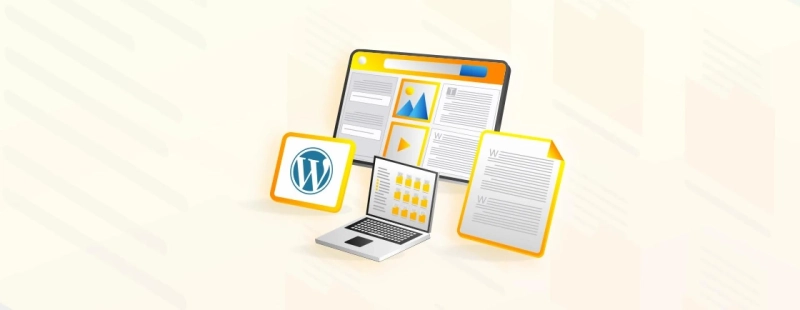If you are an entry-level developer and afraid of complex industry jargon like “WordPress File” and “Directory structure”, don’t worry; we are here to make things easy for you.
So, in this blog, we'll discuss everything there is to know about the WordPress file and directory structure. You'll see and learn about all the different files and folders required to ensure your WordPress website works perfect.
What is WordPress File & Directory Structure?
First, let's see what the WordPress file and directory structure is.
It refers to the organization and arrangement of files and folders within a WordPress installation. It shows where the different components of the WordPress system, like core files, themes, plugins, media uploads, and configuration files, are located.
The file structure in WordPress plays a crucial role in how the CMS functions. It can also support how developers and site administrators operate their websites. A better understanding of WordPress file and directory structure allows users to locate specific files, make modifications, add custom code, install themes & plugins, and manage site content effectively.
The WordPress file and directory structure is split into four parts:
WordPress Configuration Fileswp-admin [dir]wp-includes [dir]wp-content [dir]In the following sections, we'll look at WordPress files and directories
WordPress Configuration Files
WordPress configuration files contain the settings and parameters crucial for your WordPress CMS and website to operate properly. These files help configure several aspects of a website, including security keys, language preferences, database connectivity, debugging settings, and so on.
.htaccesswp-config.phpindex.phpWordPress Directory Folders
After the configuration files, we move to the key directories, i.e., wp-admin, wp-includes, and wp-content. The primary aim of the file and directory structure is to organize and manage the wide variety of contents and components of a WordPress website.
Why Learn About the WordPress File & Directory Structure?
Everything you have learned so far from this blog may seem a little daunting. So you may think, "What's the point in learning all this?". Well, here are some reasons that may justify your learning about this file and directory structure:
You can take care of the minor issues with the themes and plugins (like disabling them) by yourself.
In case of any issues, this knowledge can help you sift through advice from different sources and decide on the best solution accordingly. Moreover, you can even consult a WordPress development company and tell them exactly what kind of issue you have been facing. That will help save some time.
With this additional know-how, you'll be able to create, customize, upgrade, and maintain your WordPress website better and more efficiently.
You won't accidentally delete any critical files (or make any unintentional changes to them). That will help prevent any website crashes.
Conclusion
We created this blog for anyone confused about what goes on BTS on any WordPress website. How does this CMS store and manage the info and details regarding any website? The WordPress file and directory structure consists of the configuration files that contain the .htaccess, wp-config.php, and index.php. Then there are the directory folders consisting of the wp-admin, wp-includes, and wp-content.


